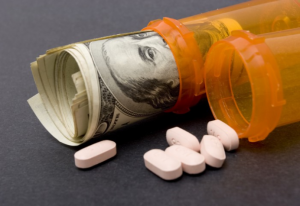Why are Drug Costs Are So Difficult To Bring Down ?
AARP launched its “Stop Rx Greed ” campaign to lower drug prices.
The message is that Americans are spending an excessive amount on prescription drugs, the cost of which likely topped $330 billion in 2018. By comparison, the highly lucrative NFL generated less than $15 billion during the 2017 season.
On the same day this message blasted out, there was a health care conference being held, where bio-pharmaceutical management enthralled the crowded room with descriptions of potential curative therapies for rare diseases that would generate sales of $1 billion annually. The patient population for some of these products is only 1,000, implying a cost per person of $1 million.
On one side are, of course, the drug and biotechnology corporations and their employees, investors, and shareholders of public drug producers. They insist that high-priced new drugs are justified by the hundreds of millions of dollars spent on their development, although R&D costs should be one input, not necessarily the most influential input, in the ultimate price. On the other side, the vocal opposition to high drug prices comes from a breadth of sources. Payers, who are sometimes patients, but often insurance companies, balk at very costly new therapies for everything from cancer to hepatitis. Politicians, from Donald Trump to Hillary Clinton, Bernie Sanders and most of the Democrats running for the 2020 nomination, invoke lowering prescription drug prices as one of their goals.
Even if politicians truly wanted to lower drug prices, one complexity is that Medicare, which many candidates want to expand broadly, has no authority to negotiate thanks to an ill-advised policy passed by Congress that has been in effect since 2006. Changing the law requires action. Academic institutions and medical centers receive funding from drug companies and often share in the success of drugs developed in their labs. Foundations that focus on rare diseases and support research efforts within for-profit firms now participate in a windfall from products that eventually reach the market. The Cystic Fibrosis Foundation sold its royalty rights in several drugs to Royalty Pharma for $3.3 billion a few years ago, a milestone transaction for a charitable foundation. The buyer obviously assumed that future profits from these drugs would exceed their acquisition price of billions of dollars.
Despite an environment where so many industries have been hit by deflationary competitive forces — retail, traditional media, banking and brokerage commissions — the bio-pharmaceutical industry has maintained its moat around pricing. It will, no doubt, continue the fight, which will be longer and more difficult to win, in part due to the mixed interests between the participants in this battle.
Have Questions? Just Us Insurance Services / JustusInsurance.com / 877-777-7055


